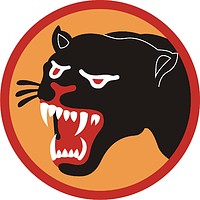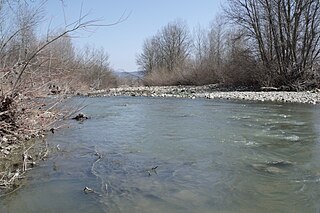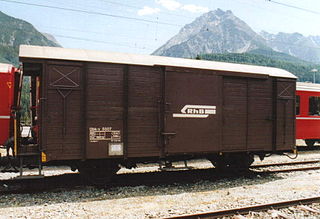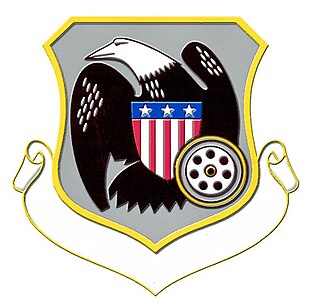
A prisoner of war (POW) is a person who is held captive by a belligerent power during or immediately after an armed conflict. The earliest recorded usage of the phrase "prisoner of war" dates back to 1610.

The North African campaign of the Second World War took place in North Africa from 10 June 1940 to 13 May 1943. It included campaigns fought in the Libyan and Egyptian deserts and in Morocco and Algeria, as well as Tunisia. The campaign was fought between the Allies and the Axis Powers. The Allied war effort was dominated by the British Commonwealth and exiles from German-occupied Europe. The United States officially entered the war in December 1941 and began direct military assistance in North Africa on 11 May 1942.

The Western Front was a military theatre of World War II encompassing Denmark, Norway, Luxembourg, Belgium, the Netherlands, the United Kingdom, France, and Germany. The Italian front is considered a separate but related theatre. The Western Front's 1944–1945 phase was officially deemed the European Theater by the United States, whereas Italy fell under the Mediterranean Theater along with North Africa. The Western Front was marked by two phases of large-scale combat operations. The first phase saw the capitulation of Luxembourg, Netherlands, Belgium, and France during May and June 1940 after their defeat in the Low Countries and the northern half of France, and continued into an air war between Germany and Britain that climaxed with the Battle of Britain. The second phase consisted of large-scale ground combat, which began in June 1944 with the Allied landings in Normandy and continued until the defeat of Germany in May 1945 with its invasion.

The 66th Infantry Division was a unit of the United States Army during World War II. Activated 15 April 1943, the division trained at Camp Blanding, Florida, and was later transferred to Camp Robinson, Arkansas and then later to Camp Rucker, Alabama before being shipped overseas to England on 26 November 1944. Commanded by Maj. Gen. Herman F. Kramer, the 66th Infantry Division's main role in World War II was containing and eliminating the remaining pockets of German soldiers in Northern France.

The 106th Infantry Division was a division of the United States Army formed for service during World War II. Two of its three regiments were overrun and surrounded in the initial days of the Battle of the Bulge, and they were forced to surrender to German forces on 19 December 1944. The division was never officially added to the troop list following the war, despite having been almost completely organized in Puerto Rico by 1948; subsequently, the War Department determined the division was not needed and inactivated the division headquarters in 1950.

The Siegfried Line campaign was a phase in the Western European campaign of World War II, which involved actions near the German defensive Siegfried Line.

Eugenio Calò was an Italian Jewish resistance fighter during World War II. Born in Pisa to an old Sephardi family, he was posthumously awarded the Gold Medal for Military Valour, Italy's highest honor for heroism. Eugenio Calò was an Italian partisan, second in command of the Pio Borri partisan division that fought the Germans in the Casentino mountains in Tuscany. As a Jewish victim of fascist Italy during the Second World War, Calò had lost his workshop, his home, and his family. Finally, at the age of 38, he was captured, tortured and murdered by the Germans.

Holocaust trains were railway transports run by the Deutsche Reichsbahn national railway system under the control of Nazi Germany and its allies, for the purpose of forcible deportation of the Jews, as well as other victims of the Holocaust, to the Nazi concentration, forced labour, and extermination camps.

The German Army was the land forces component of the Wehrmacht, the regular armed forces of Nazi Germany, from 1935 until it effectively ceased to exist in 1945 and then was formally dissolved in August 1946. During World War II, a total of about 13.6 million soldiers served in the German Army. Army personnel were made up of volunteers and conscripts.

The spring 1945 offensive in Italy, codenamed Operation Grapeshot, was the final Allied attack during the Italian Campaign in the final stages of the Second World War. The attack in the Lombard Plain by the 15th Allied Army Group started on April 6, 1945 and ended on May 2 with the surrender of German forces in Italy.

The military use of railways derives from their ability to move troops or materiel rapidly and, less usually, on their use as a platform for military systems, like very large railroad guns and armoured trains, in their own right. Railways have been employed for military purposes in wartime since the Revolutions of 1848. Improvements in other forms of transport have rendered railways less important to the military since the end of World War II and the Cold War, although they are still employed for the transport of armoured vehicles to and from exercises or the mass transport of vehicles to a theatre of operations. The US Air Force developed the Peacekeeper Rail Garrison mobile ICBM in the 1980s, but it never reached operational status.

The use of horses in World War I marked a transitional period in the evolution of armed conflict. Cavalry units were initially considered essential offensive elements of a military force, but over the course of the war, the vulnerability of horses to modern machine gun, mortar, and artillery fire reduced their utility on the battlefield. This paralleled the development of tanks, which ultimately replaced cavalry in shock tactics. While the perceived value of the horse in war changed dramatically, horses still played a significant role throughout the war.

Horses in World War II were used by the belligerent nations, for transportation of troops, artillery, materiel, messages, and, to a lesser extent, in mobile cavalry troops. The role of horses for each nation depended on its military doctrines, strategy, and state of economy. It was most pronounced in the German and Soviet Armies. Over the course of the war, Germany and the Soviet Union together employed more than six million horses.

The Paglia is an Italian river and a tributary of the Tiber.

A covered goods wagon or van is a railway goods wagon which is designed for the transportation of moisture-susceptible goods and therefore fully enclosed by sides and a fixed roof. They are often referred to simply as covered wagons, and this is the term used by the International Union of Railways (UIC). Since the introduction of the international classification for goods wagons by the UIC in the 1960s a distinction has been drawn between ordinary and special covered wagons. Other types of wagon, such as refrigerated vans and goods wagons with opening roofs, are closely related to covered wagons from a design point of view. Similar freight cars in North America are called boxcars.

The 442d Operations Group is an active United States Air Force Reserve unit. It is the flying component of the Tenth Air Force 442d Fighter Wing, stationed at Whiteman Air Force Base, Missouri.

The 436th Operations Group is an active United States Air Force unit. It is the flying component of the Eighteenth Air Force 436th Airlift Wing, stationed at Dover Air Force Base, Delaware.

The 434th Operations Group is an active United States Air Force Reserve unit. It is the flying component of the Fourth Air Force 434th Air Refueling Wing, stationed at Grissom Air Reserve Base, Indiana.

The French Gratitude Train, commonly referred to as the Merci Train, were 49 World War I era "forty and eight" boxcars gifted to the United States by France in response to the 1947 U.S. Friendship Train. It arrived in Weehawken, New Jersey on February 2, 1949.

British logistics supported the operations of Field Marshal Sir Bernard Montgomery's Anglo-Canadian 21st Army Group in the Western Allied invasion of Germany from 8 January 1945 until the end of the Second World War in Europe on 8 May 1945. To conserve scarce manpower, the British and Canadian forces employed mechanisation and materiel for maximum effect in combat operations. This involved prodigious use of ammunition, fuel, and equipment, which in turn demanded a first-class military logistics system. By this time, the British Army was highly experienced, professional, and proficient.





















